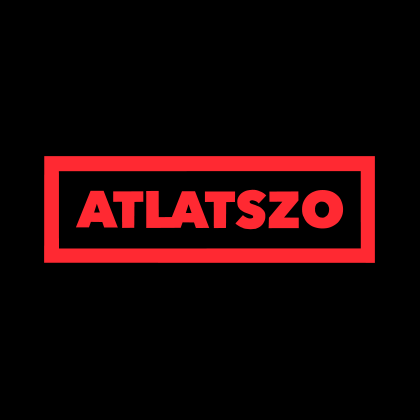The https://english.atlatszo.hu use cookies to track and profile customers such as action tags and pixel tracking on our website to assist our marketing. On our website we use technical, analytical, marketing and preference cookies. These are necessary for our site to work properly and to give us inforamation about how our site is used. See Cookies Policy
Hungarian government spent billions on football academies in Slovenia, Ukraine and Croatia
The Hungarian government is financially supporting soccer wherever it can: new stadiums are being built across the country. Besides professional soccer, there is a huge amount of money spent on junior teams and training the new generations of soccer players as well. This soccer mania did not stop at the borders of Hungary: construction of stadiums and soccer academies have started in the past few years in neighboring countries in territories where ethnic Hungarians live. Hungary has spent several billions of forints on these academies across the border since then. However, it has not been clear until now, how this money is being spent by the soccer clubs and academies in neighboring countries. We acquired and processed all the contracts relating to the Hungarian state support to these football clubs, and we are publishing them now. Here, in the second part of our investigation about Hungarian taxpayer support, we track the 6.5 billion forints (approximately €20.1 million) that were given to football academies in Croatia, Slovenia, and Ukraine.
In the first part of our series, we tracked how 16 billion Hungarian forints (approximately €49.5 million) from taxpayer funds were directed to territories where ethnic Hungarians live in Slovakia, Romania (Transylvania) and Serbia (Vojvodina).

The money was channeled through the Hungarian Football Federation (MLSZ, Magyar Labdarúgó Szövetség) and the Bethlen Gábor Fund (BGA), a state instrument of financial aid to ethnic Hungarians in neighboring countries. The money, according to documents acquired by Atlatszo, was used to build four stadiums, more than fifteen soccer fields, and four additional buildings.
The Orban government spent billions on Hungarian football clubs in Serbia, Romania and Slovakia
The Hungarian government is financially supporting soccer wherever it can: new stadiums are being built across the country. Besides professional soccer, there is a huge amount of money spent on junior teams and training the new generations of soccer players as well.
In the second part of our series, we discovered that according to a contract obtained by Atlatszo, PFLA is the ’professional supervisor’ of the Seklerland Academy and thus junior players can transfer from the new academy to PFLA without the latter having to pay any compensation for the training of the young talents. This means that Hungarian state support for junior soccer academies in neighboring countries benefits not only the local ethnic Hungarian communities but also the privately owned foundation managing PFLA. The chairman of the latter is Lőrinc Mészáros, a long-time friend of PM Viktor Orbán. According to some estimates, Mészáros is the wealthiest man in Hungary.
The soccer team in Felcsút can get players for free from a soccer academy in Transylvania that receives Hungarian government support
A soccer team based in Romania, FK Csíkszereda, was given 3.7 billion forints (approximately €11.5 million) from Hungarian taxpayer funds since 2013.
According to documents acquired by Atlatszo, more than 6.5 billion (approximately €20.1 million) Hungarian forints were paid to football clubs and academies Croatia, Slovenia and Ukraine in the past few years. The money was channeled through MLSZ and BGA in these cases as well.
The money was used to pay for the construction of one stadium, more than ten soccer fields, and three additional buildings.
We acquired the documents after filing freedom of information requests with both MLSZ and BGA. The Football Federation sent us hard copies of the documents while BGA allowed us to inspect relevant contracts. We scanned the documents we received from MLSZ and are publishing them here.
Support for soccer clubs in Croatia
It was first reported at the beginning of 2016 that Lőrinc Mészáros bought the Football club NK Osijek in Osijek, Croatia. The Hungarian government started supporting the club after the acquisition: the club that is training the junior team first received one billion forints (approximately €3.1 million), then another billion forints to help its academy.
According to the documents, the money was given to the Osijek FC Soccer School Association. The vice-president of the association is Ferenc Sakalj, who is also vice president of the Osijek adult soccer team. According to Direkt36, Sakalj helps Mészáros with translation when the latter visits Croatia and the two men are also connected by business ties: Sakalj sold his company Vasútinformatika Kft. to Mészáros in 2018.
According to MLSZ documents the money was given to the club to establish a soccer academy. The academy will cover a 15-hectare area that will include 8-10 soccer fields. One of the fields will be covered and will be able to seat 3500 people in the viewing area. The club can a smaller percentage of the money on operating costs.
Government decrees and MLSZ documents about support for Osijek FC (Google Drive).
Support for football clubs in Slovenia
A total of 1.9 billion forints (approximately €5.9 million) was sent to a football academy in Slovenia, and the money was channeled through MLSZ and BGA. The association that received the money is connected to Gábor Végh. He is usually mentioned as a businessman close to Lőrinc Mészáros because a company owned by Végh, Pharos 95, built the soccer fields of the Felcsút Academy (led by Mészáros). Also, Pharos 95 has a site in Felcsút. It was also Pharos 95 that gifted a statue of Ferenc Puskás to the Felcsút Academy. Végh is also president and owner of ZTE FC, the soccer club of Zalaegerszeg.
NK Nafta Lendava, a team that plays in the second division of the Slovenian league, was first given 600 million forints (approximately €1.9 million) by BGA. Index.hu reported at the time that the money was channeled through an organization called Muravidéki Magyar Önkormányzati Nemzeti Közösség, which is an association of the local ethnic Hungarian community in Muravidék.
Végh became the president of NK Nafta Lendava in the summer of 2017; soon after the Hungarian government decided to give 1.3 billion (approximately €4 million) more to the team, this time through MLSZ.
The money was given to the club to help launch the ‘professional program of the academy’ and for the construction of a sports center including three soccer fields, a beach soccer field and service buildings with gyms and offices.
The government decree and MLSZ documents about the money given to NK Nafta Lendava (Google Drive).
Financial support for soccer in Zakarpattia, Ukraine
The case of the Mukachevo soccer academy is different from the other academies that got Hungarian taxpayer money. The reason for this is that the money was not given to an organization or association operating outside Hungary in a neighboring country but it was given to the Várda Sports Association (Várda SE). This club belongs to the football club closely connected to former minister for development Miklós Seszták. The club is called Kisvárda FC and the junior team for that club is trained by Várda SE.
Várda SE was given 2.65 billion forints (approximately €8.2 million) through MLSZ in order to establish a football academy in Mukachevo, Ukraine. In the end, the academy was built in another town because of disagreements with the town’s leaders.
According to the most recent plans the academy will be built in Dertsen and Uzhhorod. The academy itself will be built in Dertsen and the money will be spent on a dormitory, a soccer field, and other buildings. The money in Uzhhorod will be spent on the reconstruction of the Avangard stadium.
According to the plans, some of the money will be spent in Serednie as well: one more soccer field will be built and the dormitory might as well be reconstructed. Some of the money might be spent on operating costs as well.
Government decrees and MLSZ documents about support for Várda SE (Google Drive).
We found successful projects and questionable initiatives as well
According to the data compiled by Atlatszo and its partners the Hungarian government has allocated 22.5 billion Hungarian forints (approximately 70 million euros) to soccer academies in neighboring countries since 2013.
This resulted in several new soccer fields and stadiums built in Transylvania (Romania), Southern Slovakia, Vojvodina (Serbia), Zakkarpathia (Ukraine), Prekmurje (Slovenia) and Croatia.
Among the clubs supported by Hungarian taxpayer money, there are successful teams as well as sketchy initiatives. The soccer teams DAC in Dunajska Streda (Slovakia) and Sepsi OSK in Romania deserve the support of the Hungarian government. However, the Hungarian taxpayer money was used to finance dubious initiatives in Serbia, Slovenia, Croatia, and Ukraine.
Thus, the picture of the support for soccer academies in neighboring countries is characterized by dubious real estate deals and speculation, questionable business partners, investments that exist on paper only and by the ubiquitous presence of Lőrinc Mészáros.
Written by: Babett Oroszi and Zoltán Sipos — Data visualization: Bence Mikola
Additional reporting by: Anuška Delić, Maja Čakarić (Slovenia), Mašenjka Bačić (Croatia), Taras Zozulinskyy (Ukraine)
You can read the original, Hungarian-language story here. This article is a part of a research supported by the IJ4EU grant. The IJ4EU fund is not responsible for the content and any use made out of it.


